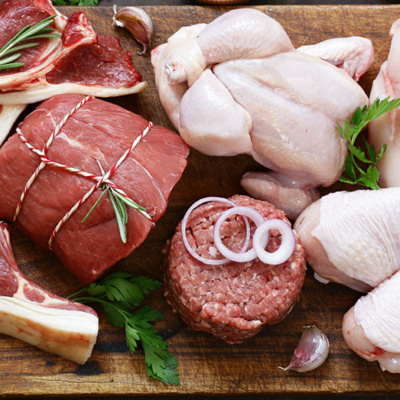top of mind news
- Holiday Hiring Outlook Holds Good And Bad News For Restaurants
- Lower-Sugar Wines Gain Momentum on Menus
- Can You Really Use CBD at Your Restaurant?
- Restaurant Trends To Watch In 2020
- Why Restaurants Must Embrace Their Role in Health
THE FARM
Poultry
Chicken harvests for the week ending October 12th were up 6.5% from the year prior, and with bird weights up 1.6%, it left ready-to-cook (RTC) production up a whopping 8.2% from last year. Wholesale chicken prices have held steady amid the larger production, but it appears that lower prices may now be on the horizon. Breast meat prices remain near record lows while leg quarter prices have plummeted from their early summer highs this fall. Tenders, as well, have resumed their downward slide, but a seasonal bottom is expected before early-December. Wing prices, however, remain firm but look to be on the defensive, with lower prices forecast from now until year’s end.
Beef
While continuing to decline week-to-week, beef production remains modestly more than a year ago, but was revised downward from initial estimates after a disruption was noted at another beef packing plant in Dodge City, KS. Total beef sales are starting to pick up, including forward sales, which means packers will have to continue running active harvests going forward. Aside from the seasonal upside price action for the Choice middle meats, the beef trim and grind markets are finding support as well. Expect the beef 50s to continue higher into the late fall, with upside potential for the grinds as well.
Pork
Pork output last week continued to accelerate, up 1.2% from the week prior and was 4.8% better than last year. Despite larger production schedules, pork prices remain mostly in line with a year ago as escalating exports have taken any “excess” pork from the domestic market. Weekly export sales continue to indicate that overseas shipments are moving well, with hams, loins, ribs, and variety meats all posting record (or near record) sales over the past several weeks. Look for further price support to occur for the various pork markets moving forward.
THE SEA
Seafood
The shrimp markets are mostly tracking at or above year ago levels. This is despite solid shrimp imports. During August, the U.S. brought in 5.1% more shrimp than in 2018. The inflated value of the U.S. dollar is encouraging imports and is likely to continue to do so into the winter. This should temper the upside potential in the shrimp markets for the foreseeable future. That said, the downside price risk is likely limited as well.
THE GARDEN
Produce
Lettuce supplies remain limited. U.S. iceberg lettuce shipments fell 1.4% last week from the week prior and were 8.5% less than the prior year. This is due to adverse weather and the seasonal chief harvest area transition. Lettuce supplies could be subpar for the next few weeks until the main harvest area transitions again to the Yuma-Imperial Valley. However, the greater price risk in the lettuce markets is to the downside. The Idaho potato harvest is winding down at 91% complete. The potato markets continue to track above 2018 price levels.
THE KITCHEN SINK
Dairy
The cheese markets remain inflated, especially barrels which are the costliest in 59 months. Per the USDA, September 30th cheese stocks were just .8% less than 2018 with the monthly build being the second best in seven years. Cheese purchases at these price levels should be on a near-term need only basis. Lower cheese prices are likely in the coming weeks. Butter prices are down since last week. Per the USDA, butter stocks on September 30th were 7% more than the prior year. It was the smallest September drawdown in 48 years. History hints that butter prices can still fall between now and year end.
Grains
The U.S. corn and soybean harvests are progressing. As of October 20th, 30% of the corn and 46% of the soybeans had reached the bin. This compares to five-year averages of 47% for corn and 64% for soybeans. USDA crop ratings have remained respectable despite recent adverse weather. Upside risk exists in the feed markets.
Oil
Nearby ultra-low diesel fuel futures are up from last week. Per the EIA, the most recent weekly national average retail diesel fuel price was $3.050/gal. which was 10.1% cheaper than a year ago. Diesel fuel prices usually trend lower in the late fall.














